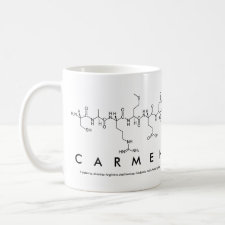
Authors: Díaz-Díaz G, Blanco-López MC, Lobo-Castañón MJ, Miranda-Ordieres AJ, Tuñón-Blanco P
Article Title: Hemo-acrylic polymers as catalyst for the oxidative dehalogenation of 2,4,6-trichlorophenol. Chloroperoxidase's mimic imprinting effects.
Publication date: 2012
Journal: Journal of Molecular Catalysis A: Chemical
Volume: 353-354
Issue: (1)
Page numbers: 117-121.
DOI: 10.1016/j.molcata.2011.11.014
Alternative URL: http://www.sciencedirect.com/science/article/pii/S1381116911004833
Abstract: Acrylic polymers with catalytic activity for the oxidative degradation of 2,4,6-trichlorophenol (TCP) were developed. In order to mimic the active site of chloroperoxidase (CPO), chloro-iron(III)-protoporphyrin IX was used as the catalytic centre, and methacrylamide (MA) and 4-vinylpyridine (VPY) were used as the monomers that build up the active sites. Taking as basis 3:1 (w/w) acid:basic aminoacidic composition of CPO, three MA:VPY combinations were tested: one keeping the same ratio (3:1) i.e. 25% VPY in the functional monomer mixture, one with lower content of the basic monomer (9:1) i.e. 10% VPY, and one with higher concentration of it (1:1) i.e. 50% VPY. Polymers synthesized with the lowest VPY content exhibited the highest catalytic efficiency, which was improved by the creation of specific TCP binding sites through molecular imprinting technology. In these way, synthetic enzymes with useful properties for analytical and bioremediation applications were obtained
Template and target information: 2,4,6-trichlorophenol, TCP
Author keywords: Heterogeneous catalyst, Chloroperoxidase mimic, 2,4,6-Trichlorophenol dechlorination, molecularly imprinted polymer



Join the Society for Molecular Imprinting

New items RSS feed
Sign-up for e-mail updates:
Choose between receiving an occasional newsletter or more frequent e-mail alerts.
Click here to go to the sign-up page.
Is your name elemental or peptidic? Enter your name and find out by clicking either of the buttons below!
Other products you may like:
 MIPdatabase
MIPdatabase









